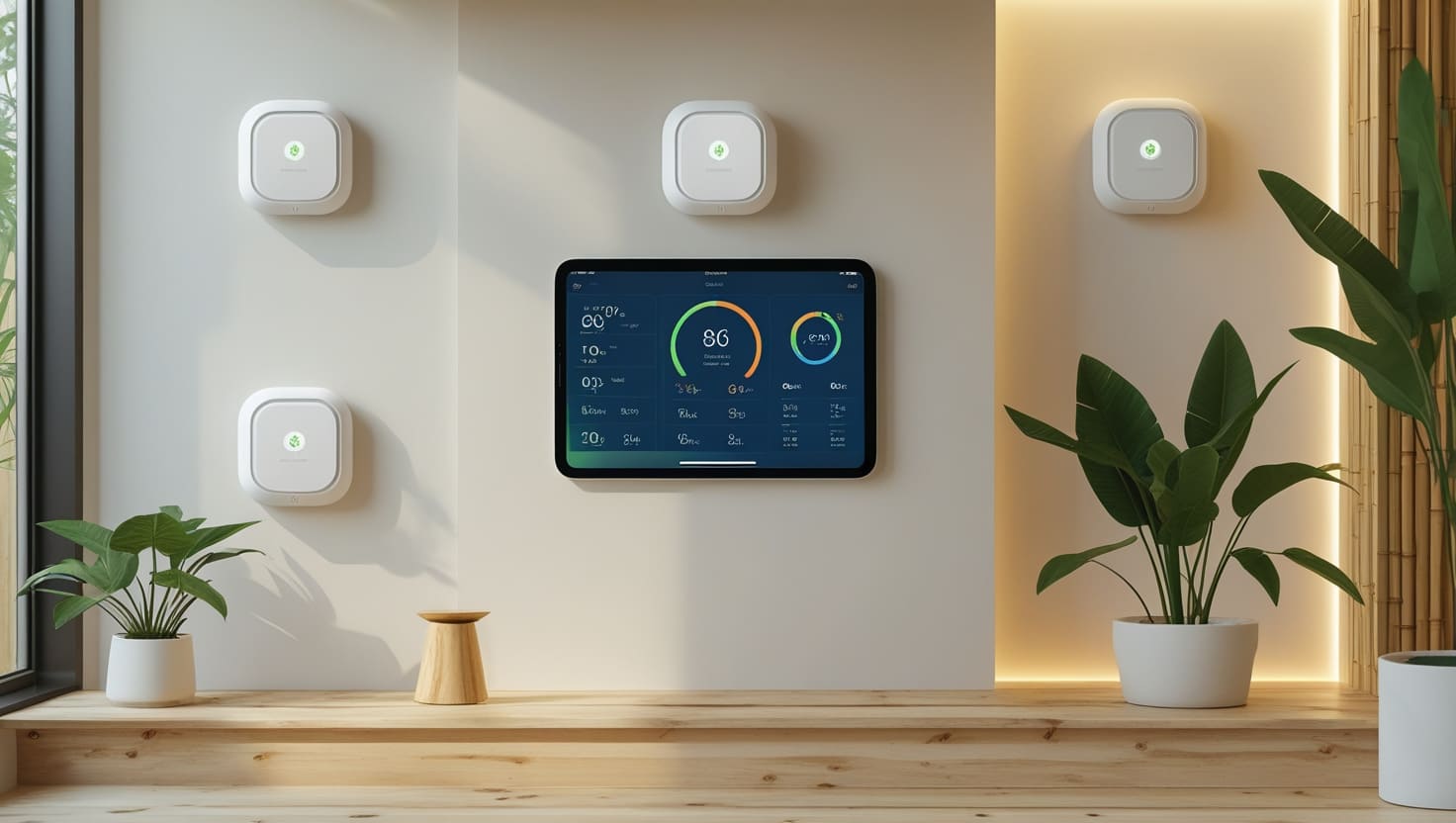As the world grows more conscious of climate change and sustainability, eco-friendly living is no longer just a trend — it’s a lifestyle. One of the most powerful ways to embrace sustainable living in 2025 is through the use of smart environmental sensors. These advanced devices monitor air quality, temperature, humidity, carbon dioxide levels, and more — empowering homeowners to create healthier, energy-efficient environments with real-time data.
Whether you’re looking to reduce energy usage, improve indoor air quality, or detect environmental hazards before they become a problem, smart sensors offer practical solutions for modern green living.
What Are Smart Environmental Sensors?
Smart environmental sensors are IoT-enabled devices that detect and track various environmental conditions inside or outside your home. These sensors collect data and often integrate with smart home systems like Alexa, Google Home, or Apple HomeKit to automate actions or send alerts to your devices.
Common types of environmental data monitored:
- Air Quality Index (AQI)
- Temperature & humidity
- Carbon dioxide (CO₂) & carbon monoxide (CO)
- Particulate matter (PM2.5 & PM10)
- VOCs (Volatile Organic Compounds)
- Water leakage
- Noise pollution
- UV and light levels
Benefits of Using Smart Environmental Sensors at Home
- Improved Indoor Air Quality
Sensors detect pollutants and allergens, helping reduce asthma, allergies, and respiratory issues. - Energy Efficiency
When integrated with smart thermostats and HVAC systems, sensors can optimize heating, cooling, and lighting based on real-time data. - Early Hazard Detection
Smart CO, smoke, and leak detectors alert you before things escalate into emergencies. - Automated Smart Home Routines
Sensors can trigger air purifiers, dehumidifiers, fans, and smart blinds for optimized indoor climate control. - Sustainable Living
With constant environmental monitoring, you can reduce energy waste, carbon footprint, and water usage.
Top Smart Environmental Sensors for Eco-Friendly Homes in 2025
1. Airthings View Plus
Best For: Complete indoor air quality monitoring
Key Features:
- Monitors radon, CO₂, PM2.5, humidity, and VOCs
- Wi-Fi and Bluetooth connectivity
- Battery-powered and portable
- Integrates with Alexa, Google Assistant
Perfect for eco-conscious families who prioritize air purity and health.
2. Eve Room (2nd Gen)
Best For: Apple HomeKit users
Key Features:
- Tracks air quality (VOCs), temperature, and humidity
- E-ink display for minimal energy use
- Privacy-first: works without a cloud
- Fully compatible with iOS and Siri
A great option for Apple-centric eco homes focused on energy savings and air monitoring.
3. Awair Element
Best For: Stylish design and real-time insights
Key Features:
- Measures temperature, humidity, CO₂, VOCs, PM2.5
- Provides personalized tips for healthier air
- Works with Google Assistant, Alexa, and IFTTT
- Great for urban apartments and small homes
Awair balances function and form beautifully — without compromising on eco-awareness.
4. Netatmo Smart Weather Station
Best For: Outdoor + indoor environmental tracking
Key Features:
- Monitors indoor/outdoor temperature, humidity, CO₂, and noise
- Includes a companion weather app
- Expandable with rain and wind sensors
- Excellent for managing garden irrigation and solar shading
Ideal for sustainable home gardens and energy-conscious outdoor management.
5. Govee WiFi Thermo-Hygrometer
Best For: Budget-friendly environmental monitoring
Key Features:
- Real-time alerts for temperature and humidity changes
- Cloud data storage & historical tracking
- Integrates with Alexa and Google Home
- Ideal for greenhouses, wine cellars, and bedrooms
This device proves you don’t need a huge budget to start living sustainably.
6. Foobot Air Quality Monitor
Best For: Smart air purification automation
Key Features:
- Detects particulate matter, VOCs, temperature, and humidity
- Learns air pollution patterns over time
- Can connect with HVAC systems to trigger purification
- Great for families with pets or allergies
Foobot acts as your indoor environmental assistant 24/7.
7. ecobee SmartSensor
Best For: Smart thermostat integrations
Key Features:
- Monitors occupancy, temperature, and humidity
- Works with Ecobee thermostats for energy savings
- Automates comfort settings based on room usage
- Helps cut HVAC costs and carbon emissions
Great for minimizing wasted energy in empty rooms.
8. Temtop M2000 2nd Gen
Best For: Professional-level air quality data
Key Features:
- High-precision sensors for CO₂, PM2.5, PM10, HCHO, TVOC
- Rechargeable and portable
- Ideal for home, office, or industrial use
- Provides instant feedback and analysis
For serious eco-enthusiasts who want lab-level data.
Choosing the Right Sensor for Your Home
When selecting a smart environmental sensor, consider:
- Use case: Indoor, outdoor, or both?
- Integration: Does it work with your smart home system?
- Power source: Battery vs. plugged-in
- App experience: Is the interface user-friendly and insightful?
- Data access: Can you view historical trends or export data?
Start with your most pressing environmental concerns and choose a sensor that helps monitor and manage them automatically.
How Smart Sensors Contribute to Sustainability
Smart sensors aren’t just about comfort — they play a big role in eco-friendly living:
- Prevent energy waste by optimizing lighting, heating, and cooling.
- Monitor water use to detect leaks and conserve.
- Improve indoor air quality, reducing health-related energy burdens.
- Encourage mindful habits through data feedback and automation.
- Support smart home integration for more efficient energy ecosystems.
As smart homes evolve, environmental sensors will serve as the backbone of sustainable automation.
The Future of Eco-Friendly Smart Homes
Looking ahead, we’ll see even smarter sensors that:
- Use AI for predictive adjustments based on weather and occupancy.
- Communicate across devices using open smart home standards like Matter.
- Adapt to user behavior for better comfort and reduced emissions.
- Generate insights to help homeowners qualify for green home certifications.
In short, the future is bright, efficient, and incredibly smart.
Conclusion
Investing in smart environmental sensors is a smart move for anyone looking to reduce their environmental impact, save energy, and live a healthier life. With the right devices, you can monitor your home’s environmental data in real time, automate eco-friendly actions, and contribute to a more sustainable future — all without sacrificing comfort or convenience.
Which environmental sensor do you use or plan to try for your eco-friendly home? Share your experience in the comments below!





